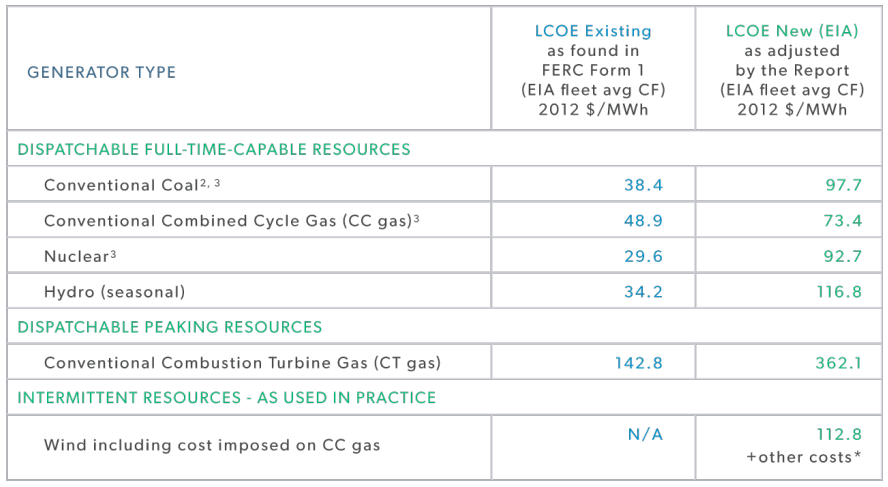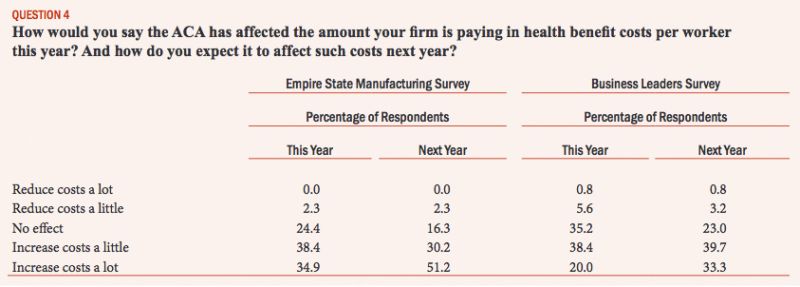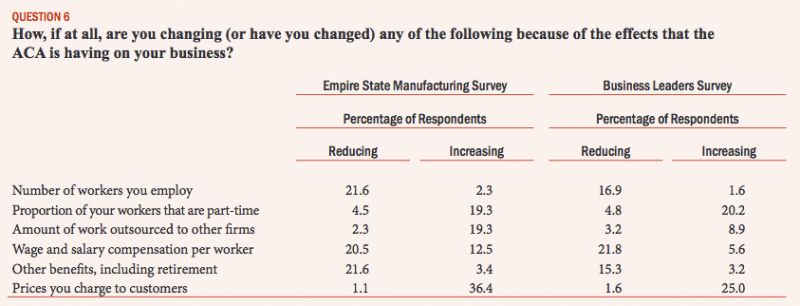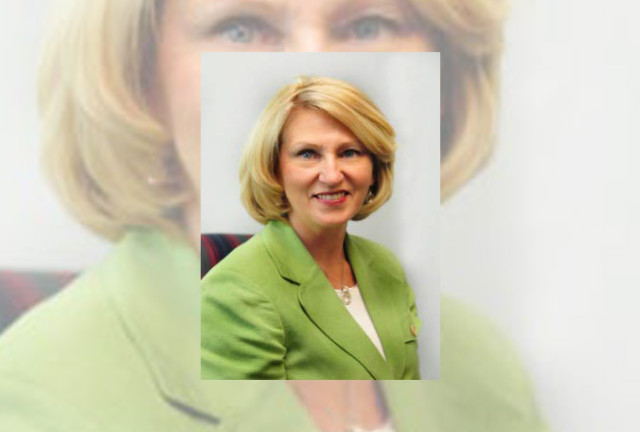Reasoned agnosticism is a welcome antidote to hysteria by MAX BORDERS.
Reasonable people can disagree about the nature and extent of climate change. But no one should sally forth into this hostile territory without reason and reflection.
“Some scientists make ‘period, end of story’ claims,” writes biologist and naturalist Daniel Botkin in the Wall Street Journal, “that human-induced global warming definitely, absolutely either is or isn’t happening.”
These scientists, as well as the network of activists and cronies their science supports, I will refer to as the Climate Orthodoxy. These are the folks who urge, generally, that (a) global warming is occurring, (b) it is almost entirely man-made, and (c) it is occurring at a rate and severity that makes it an impending planetary emergency requiring political action. A Climate Agnostic questions at least one of those premises.
Trying to point out the problems of the Climate Orthodoxy to its adherents is like trying to talk the Archbishop of Canterbury into questioning the existence of God. In that green temple, many climatologists and climate activists have become one in the same: fueled both by government grants and zealous fervor.
Room for debate
But the debate must go on, even as the atmosphere for dialogue gets increasingly polluted. The sacralization of climate is being used as a great loophole in the rule of law, an apology for bad science (and even worse economics), and an excuse to do anything and everything to have and keep power.
Those with a reasoned agnosticism about the claims of the Climate Orthodoxy will find themselves in debate. It’s April 22nd — Earth Day. So I want to offer 22 ways to think about the climate-change debate. I hope these points will give those willing to question man-made climate change some aid and comfort.
1. Consider the whole enchilada
First, let’s zoom out a few orders of magnitude to look at the Climate Orthodoxy as a series of dots that must be connected, or better, a series of premises that must be accepted in their totality.
- The earth is warming.
- The earth is warming primarily due to the influence of human beings engaged in production and energy use.
- Scientists are able to limn most of the important phenomena associated with a warming climate, disentangling the human from the natural influence, extending backward well into the past.
- Scientists are able then to simulate most of the phenomena associated with a warming earth and make reasonable predictions, within the range of a degree or two, into the future about 100 years.
- Other kinds of scientists are able to repackage this information and make certain kinds of global predictions about the dangers a couple of degrees will make over that hundred years.
- Economists are able to repackage those predictions and make yet further predictions about the economic costs and benefits that accompany those global predictions.
- Other economists then make further predictions based on what the world might be like if the first set of economists is right in its predictions (which were based on the other scientists’ predictions, and so on) — and then they propose what the world might look like if certain policies were implemented.
- Policymakers are able to take those economists’ predictions and set policies that will ensure what is best for the people and the planet on net.
- Those policies are implemented in such a way that they work. They have global unanimity, no defections, no corruption, and a lessening of carbon-dioxide output that has a real effect on the rate of climate change — enough to pull the world out of danger.
- Those policies are worth the costs they will impose on the peoples of the world, especially the poorest.
That is a lot to swallow. And yet, it appears that the Climate Orthodoxy requires we accept all of it. Otherwise, why would the Intergovernmental Panel on Climate Change (IPCC) publish a document called “Summary for Policymakers”?
2. Models are not evidence
The problem with models is that they are not reality. Whenever we try to model complex systems like the climate, we’re only getting a simulacrum of a system, designed to represent projected scenarios. So when a climatologist presents a model as evidence, he is playing a kind of game. He wants you to think, by dint of computer wizardry, that he has drawn for you a picture of the world as it is. But he hasn’t. And if observation of surface temperatures over the last 18 years has shown one thing, it’s that climate models have been inadequate tools for forecasting complex natural phenomena.
3. Forecast is not observation
In the first IPCC assessment of 1992, the authors wrote, “Scenarios are not predictions of the future and should not be used as such.” Whether one views the models as predictions or as scenarios, the evidence is barely within the most conservative of these in the most recent assessment, which is essentially designed to hide good news.
When one attempts to forecast — that is, to tell the future — one is not engaging in observation. That is not to claim that prediction isn’t a part of the scientific enterprise; it’s simply to say that when one’s predictions (or scenarios) are off, one’s theory is suspect, and it must be modified and tested again. Any theory, and any forecast scenarios on which it’s based, have to be tested in the crucible of observation. The Climate Orthodoxy has thus far failed that test.
4. Climate systems are complex
As I alluded to above, climate systems are complex systems. And complex systems are notoriously immune to certain types of prediction and forecast. As Edward Lorenz famously taught us when he coined the term “butterfly effect,” the slightest changes in initial conditions can give rise to wild, unpredictable outcomes in the system. It’s no different for a simulation. “I realized,” said Lorenz of his findings, “that any physical system that behaved non-periodically would be unpredictable.” Now, those concerned about climate change will try to use this perspective to suggest changes to the atmosphere could cause wild, unpredictable climatic catastrophes. And that might turn out to be true. (But it might not. We’ll discuss Pascal’s Climate Wager later.) What we should be concerned about for now is how easy it is for a single tiny error (or purposeful fudge) in a climate model to generate ranges that, though they can feed hysteria, are out of touch with reality.
5. Garbage in equals garbage out
Complex systems also make modeling difficult to undertake because a model is a kind of simulation whose success turns on the accuracy of inputs. Computer scientists have an apt saying for such simulations: “Garbage in, garbage out.” If any of your variables are in error, your results are suspect. And the more variables you introduce, the more likely you are to introduce errors. But for the model to resemble reality, you have to be more granular by including more and more variables that represent causal relationships in the world. As more variables get introduced, the likelihood of introducing false inputs goes up proportionally. And those errors compound. In The Black Swan, Nicolas Nassim Taleb writes:
Simply, we are facing nonlinearities and magnifications of errors coming from the so-called butterfly effects … actually discovered by Lorenz using weather forecasting models. Small changes in input, coming from measurement error, can lead to massively divergent projections — and that generously assumes we have the right equations.
In other words, the lower “res” the model, the less it conforms to reality’s details. The higher “res” the model, the more likely it is to be infected with errors. This is one of the great paradoxes of modeling.
6. Data can be detached
The problem with numbers is that they’re sometimes detached from the phenomena they’re meant to describe. If we see a record of a person’s body temperature from 1969 — at 99.1 degrees — we might assume he had a fever. But knowing the context of that measurement may lead us to tell a different story about what caused his temperature at that time: for example, that the man had been sitting in a hot tub. Climate data from the past can offer even less context, clarity, and accuracy.
But let’s suppose all the world’s thermometers — both satellite and land — have neither heat-island effects nor any other distortions, and that they offer an accurate description of the earth’s temperature. Let us also assume that the temperature readings over the last hundred years are completely accurate and represent the planet as a whole, and that the temperature data derived from inferential methods such as ice core samples and tree rings also paint an accurate picture of surface temperatures well into the past, which is doubtful.
We are still left with a problem: We cannot simply look at the outputs of the climate system (temperature), because they are linked to all-important inputs — that is, those factors that caused any changes in temperature. The inability for climate scientists to tell a more conclusive causal story about factors in past warming is another reason to remain agnostic about trends over longer timescales.
7. Decomposability is a virtual impossibility
Another serious problem with the theory of anthropogenic global warming (AGW) is that, if it is a theory at all, it seems to be a cluster of interconnected theories and interconnected models. Let that settle for a moment. Consider that the IPCC, the central climate-science organization whose job is to give the definitive word on climate change, has to assemble the work of hundreds, maybe thousands, of scientists and weave it into a comprehensive report. But as Norgaard and Baer write in Bioscience, “Models developed and heretofore interpreted within individual scientific communities are taken out of their hands, modified, and used with other models in ways over which the original scientific communities no longer have control.”
Now, in stitching together the various individual theories, studies, and models of such a diverse and inevitably error-prone community, the problem goes deeper. Never mind that the IPCC central committee has deep incentives to interpret the data in a way that creates the impression of a single, uniform theory. Suppose that every climate scientist that gets picked by the IPCC for its report claims 95 percent confidence. Even if each scientist were 95 percent certain of his particular prediction or set of parameters, we can’t be so certain about the agglomeration of 10 scientists’ opinions about disparate phenomena, much less 50. Nor can any given scientist be 95 percent confident about the work of any other scientist.
8. Stats stand in for certainty
People crave certainty, and politicians want to provide it. So when we hear that a scientist is 95 percent confident about his or her conclusions, we feel like that’s close enough, derived as it presumably is through some sort of statistical analysis. “Yet since things are ultimately uncertain,” writes theoretical mathematician William Byers:
We satisfy this need by creating artificial islands of certainty. We create models of reality and then insist that the models are reality. It is not that science, mathematics, and statistics do not provide useful information about the real world. The problem lies in making excessive claims for the validity of these methods and models and believing them to be absolutely certain.
Byers’s book The Blind Spot: Science and the Crisis of Uncertainty is a welcome antidote to this sort of scientific hubris.
Climatologist Judith Curry put matters a little differently. When a journalist asked her how the 95 percent number was determined, she replied, “The 95% is basically expert judgment, it is a negotiated figure among the authors. The increase from 90–95% means that they are more certain. How they can justify this is beyond me.”
The reporter then asked if it was really all so subjective. Curry’s reply: “As far as I know, this is what goes on. All this has never been documented.”
9. AGW might not be a theory at all
What makes a scientific theory a theory at all? This has been debated among philosophers of science, but most people generally agree that a certain set of minimum criteria should be in place. Among them, at least, are these:
- Is the theory testable? Can we formulate hypotheses grounded in the theory, then figure out a way to test the hypotheses?
- Is the theory falsifiable? Is there evidence that could call the theory into question? What evidence would exclude the theory?
- Does the theory unify? Does the theory unify seemingly unrelated phenomena under a single explanatory framework?
AGW is not testable in any laboratory sense, of course, but many natural phenomena are not. And yet we’ve already discussed the problems of testing models against available evidence — considering the models’ hypotheses and seeing whether these track with what we can observe. One might argue that models stand for hypotheses, and suffice for a testability criterion. But this is unclear.
Perhaps the most damning of the three for AGW is the falsifiability criterion. That is, the Orthodoxy has created a situation in which models play a major role in the theoretical framework. But when the models fail to track with observation, the Orthodoxy claims the timescales are not sufficient to determine a climate trend — for example, that discussing the pause of the last 18 years is “cherry picking.” Fair enough. But then what sort of data wouldcount to falsify the theory? And what, going forward, is a time scale sufficient to determine a climate trend? 100 years?
If we accept these longer timescales as sufficient to smooth out natural variability, we might reasonably ask the Orthodoxy to remain agnostic about AGW while another 70 years of data come in. (After all, they have had to rely on spurious proxies to “trick” temperature trends in the past.) But the Orthodoxy then changes tack and argues that’s too long to wait! After all, we might be going through an emergency that requires immediate action. So, despite the insufficient timescale, they expect everyone to accept the climate consensus as the basis for policymakers’ faith-based initiatives.
Finally, does AGW unify diverse phenomena under a single explanatory framework? AGW is meant to explain everything from ocean acidification to melting sea ice, to rising sea levels, to regional desertification. The trouble is with the explanatory part. When taken in isolation, each of these purported consequences of global warming either aren’t happening as predicted, or, if they are, they can be explained by factors outside AGW theory. So it’s not clear that AGW satisfies any unification criterion, either.
10. It’s matter of degree
What if the Climate Orthodoxy is wrong and the “lukewarmists” like Judith Curry turn out to be right? If we look at the empirical data over the last 30 years or so, they might be. As Rational Optimist author writes, “I found myself persuaded by the middle-of-the-road, ‘lukewarm’ argument — that CO2-induced warming is likely but it won’t be large, fast or damaging.” The Climate Orthodoxy might have been hyperventilating over a degree of warming over a century. (And, of course, policies driven by hysteria could mean the poorest people might be prevented from joining the middle class for the sake of an almost imperceptible change.)
11. Pascal’s Climate Wager
Suppose we all agreed that 100 years of accurate temperature data would be sufficient to determine a climate trend. The Climate Orthodoxy argues that we must act now to prevent climate change, in case they are right. People familiar with theology will recall this is the analogous to Pascal’s Wager, in which 17th-century Christian philosopher Blaise Pascal tells us we’d better believe in God, Heaven, and Hell. If we believe and we’re wrong, we haven’t lost anything, according to Pascal. But if we disbelieve and we’re wrong, we have eternity to suffer. Similarly, we must believe, suffer, and sacrifice now to stave off climate change.
There are a number of problems with this rationale, but the biggest one is rather ironic. There is no viable political climate solution currently on the table that is capable of mitigating any predicted warming. Taking the IPCC’s own assumptions, Patrick Michaels and Paul “Chip” Knappenberger found that there is no winning “wager” here:
Assuming the IPCC’s value for climate sensitivity (i.e., disregarding the recent scientific literature) and completely stopping all carbon dioxide emissions in the US between now and the year 2050 and keeping them at zero, will only reduce the amount of global warming by just over a tenth of a degree (out of a total projected rise of 2.619°C between 2010 and 2100).
If you think that a rise of 2.482°C is vastly preferable to a rise of 2.619°C then all you have to do is set the carbon tax large enough to drive U.S. emissions to zero by mid-century — oh yeah, and sell that tax to the American people.
So even if all the models turn out to be true, there is little we can do with policy at this point. So unlike Pascal’s Wager, there is no amount of repenting and belief that could save us. We’re either all going to climate hell, anyway, or something ain’t right. The whole conversation about “climate action” appears to be moot at this point. Don’t believe it? Check the Handy Dandy Climate Temperature Savings Calculator.
12. The debate is not over, and the science is not settled
Freeman Dyson, a brilliant theoretical physicist, is no man of the right. But he is intellectually honest enough to wear the mantel of “heretic.” Here’s why:
I am especially unimpressed by the claim that a prediction of rapid and dangerous warming is “settled science,” as firm as evolution or gravity. How could it be? It is a prediction! No prediction, let alone in a multi-causal, chaotic and poorly understood system like the global climate, should ever be treated as gospel. With the exception of eclipses, there is virtually nothing scientists can say with certainty about the future. It is absurd to argue that one cannot disagree with a forecast. Is the Bank of England’s inflation forecast infallible?
Indeed. And to say that the debate is over is not to say that those willing to debate have nothing to say. It is rather to say that you have turned off your curiosity, your humility, and your willingness to engage in discourse so that you can get what you want.
And what should we say about all this “consensus” talk? Science writer Ronald Bailey (no agnostic about climate change) wisely says:
One should always keep in mind that a scientific consensus crucially determines and limits the questions researchers ask. And one should always worry about to what degree supporters of any given scientific consensus risk succumbing to confirmation bias. In any case, the credibility of scientific research is not ultimately determined by how many researchers agree with it or how often it is cited by like-minded colleagues, but whether or not it conforms to reality.
13. Climate science isn’t climate policy
One of the biggest problems with the Climate Orthodoxy is that one set of experts that is cocksure about the science really has no expertise in the economics of climate change or in climate-change policy. How in the world is an expert in albedo effects going to have anything meaningful to say about whether climate change is good or bad for the world today — much less 50 years into the future? This profound disconnect has never stopped scientists like James Hansen from advocating for certain types of policies.
Seeing this disconnect, however, the Orthodoxy has begun training up so-called specialists in the economics of climate change, led by such “experts” as Sir Nicholas Stern, whose models and predictions are the stuff of both speculation and spectacle. More tempered in his prognostications is Yale’s William Nordhaus, but economists such as Robert Murphy offer very good reasons to question Nordhaus’s almanac, as well.
If you think modeling the climate is hard, try modeling an economy. As economist Arnold Kling writes,
I think that if the press were aware of the intellectual history and lack of scientific standing of the models, it would cease rounding up these usual suspects. Macroeconometrics stands discredited among mainstream academic economists. Applying macroeconometric models to questions of fiscal policy is the equivalent of using pre-Copernican astronomy to launch a satellite or using bleeding to treat an infection.
Whatever the pedigree of the economist, his laurels, or his letters, mixing macrometeorology with macroeconomics is like trying to read tea leaves.
14. The climate orthodoxy is inherently corruptive
Here’s the heretic Dyson again:
The politicians and the public expect science to provide answers to the problems. Scientific experts are paid and encouraged to provide answers. The public does not have much use for a scientist who says, “Sorry, but we don’t know.”
He’s right. It is nearly impossible to inoculate science from the influence of those who pay the bills. As I wrote in “The Climate Complex Strikes Back” (Freeman, February 2015), “That government money shouldn’t corrupt is just another application of the unicorn fallacy so common among well-meaning greens.” And it’s even tougher not to develop blind spots and biases when those who fund you claim to be on the side of the angels. That is why we must put our faith not in centralized hierarchies of experts but in the Republic of Science itself.
15. Reasoned agnosticism is not “denial”
Godwin’s law surfaces quickly in the debates about global warming. Here’s Botkin again:
For me, the extreme limit of this attitude was expressed by economist Paul Krugman, also a Nobel laureate, who wrote in hisNew York Times column in June, “Betraying the Planet” that “as I watched the deniers make their arguments, I couldn’t help thinking that I was watching a form of treason — treason against the planet.” What had begun as a true scientific question with possibly major practical implications had become accepted as an infallible belief (or if you’re on the other side, an infallible disbelief), and any further questions were met, Joe-McCarthy style, “with me or agin me.”
Of course, the term “denier” is meant to evoke Holocaust denial.
16. AGW might be beneficial on net
If Stern and Nordhaus (see #11) can engage in economic speculation, then we can, too. In fact, when we look back at warmer periods in the history of civilization, we see relative flourishing.
According to Matt Ridley, writing in the UK Spectator, Professor Richard Tol of Sussex University aggregated 14 major academic papers about the future effects of climate change. Tol determined that things look rosier than the Orthodoxy would have us believe:
Professor Tol calculated that climate change would be beneficial up to 2.2°C of warming from 2009 (when he wrote his paper). This means approximately 3°C from pre-industrial levels, since about 0.8°C of warming has happened in the last 150 years.
And in a more recent paper, Tol looks back over the last 100 years. He concludes that climate change raised human and environmental welfare during the 20th century:
By how much? He calculates by 1.4 per cent of global economic output, rising to 1.5 per cent by 2025. For some people, this means the difference between survival and starvation.
Sure, it’s speculative, even looking back. But isn’t it just as likely that there will be benefits as costs? It might turn out that if the planet does warm a couple of degrees, there will be new forms of flourishing.
17. One hundred years of certitude
One wonders what people in 1915 would have thought about our lives today. The pace of technological change has been staggering. And though a few people tried to make predictions, they were not cut out for the task. Likewise, we cannot readily say what forms of energy we’ll use, and what technologies they will power. As Troy University economist Daniel Sutter reminds us,
A dynamic market economy will feature too much creative destruction to allow detailed planning for the distant future. Nothing is sure in a market economy ten years from now, much less 100 years, and discounting in cost-benefit analysis simply reflects this reality. The economic future becomes more predictable when government controls economic activity, but then stagnation results. Discounting in climate change economics tells us to create wealth to protect future generations. Economic freedom and the institutions of the market economy, not central planning of energy use, is the prudent policy approach to a changing climate.
Inherent in our inability adequately to plan and predict is a recommendation that we adapt instead.
18. Adaptation as policy prescription
If the climate is warming some, and it might be, then what is the best policy? One can make a powerful case for adaptation. Adaptation is not about doing nothing. It means liberalizing the world on a number of dimensions of economic freedom to ensure that countries are rich enough to be resilient. A wealthy and adaptive people like the Dutch can figure out how to live with rising waters. A rich and resilient people like the Hong Kong Chinese can figure out how to build a city-state on a rock in 50 years. A rich and resilient citizenry of the world should be able to handle what a degree or two of change in average global temperature has in store for us — especially as we will undergo untold technological transformations over the next decade or two.
19. Climate policy has a defector problem
The problem with climate-change policies like carbon taxes is that they require near-global unanimity to work. That is, if the United States adopts a carbon tax, energy becomes more expensive for Americans. But if energy becomes more expensive here, it might be less expensive in other parts of the world. And, indeed, businesses and the energy industry will engage in energy arbitrage. Developing countries like India, China, Brazil, and Russia will welcome these energy arbitrageurs with open arms. They might develop even as we stagnate. And they should: they are lifting billions of people out of poverty. But there’s a problem here for climate policy. Every signatory to a climate treaty has strong incentives to defect. And as defectors do their thing, carbon continues to pour into the atmosphere. Nothing changes to mitigate climate change; industry simply shifts around.
20. Climate policy has an efficacy problem
Suppose we don’t accept Pascal’s Climate Wager and we conclude that no climate policy under consideration will do much to mitigate warming. Those who claim that action is vital respond to this claim by saying, “We have to start somewhere!” But if you’re conceding that no policy under consideration does very much, why would you start with a failed policy? It appears to be more empty rhetoric used to justify an unprecedented level of taxation designed to feed some of the most insatiable and predatory governments in the world.
21. Climate policy has a corruption problem
Earlier, I suggested that the Climate Orthodoxy has a corruptive influence on science. We shouldn’t stop there. The “climate industrial complex“ is large and growing. Scores of green energy companies are on the take, donating campaign contributions to politicians who control the purse strings at the Department of Energy. Legacy energy utilities lick their chops, seeing opportunities to game the system in a carbon-tax environment that is unfavorable to their competitors. Traders get in on energy credit schemes. Green NGOs play “Baptists” to all the corporate “bootleggers,” and when you scrutinize it all — including the billions of dollars the federal government pours into the “science” — the whole things starts to smell like one festering pile of corruption.
22. The confidence game
If you’re feeling uncertain, consider that the Climate Orthodoxy has to do everything it can to pull members of the public like you into assent. Here’s one final nod to Dyson:
The public prefers to listen to scientists who give confident answers to questions and make confident predictions of what will happen as a result of human activities. So it happens that the experts who talk publicly about politically contentious questions tend to speak more clearly than they think. They make confident predictions about the future, and end up believing their own predictions. Their predictions become dogmas, which they do not question. The public is led to believe that the fashionable scientific dogmas are true, and it may sometimes happen that they are wrong. That is why heretics who question the dogmas are needed.
If you are a Climate Agnostic, that’s okay. (You won’t burn at the stake; you’ll merely burn in the heat of a baking planet.)
Postscript: We are creative conservationists
As the world changes for this reason or that, we are growing richer, stronger, smarter, and more resilient. We are becoming more conscious about the environment and its natural treasures. On almost every environmental dimension — including air quality, water quality, the extent of forestland, and the return of wildlife — things are getting better. Whether you think most of these gains are a consequence of environmental regulations or improvements in market efficiencies, one thing is clear: wealthier is healthier. We should continue to cherish the beauty of the planet and continue to grow economically so we can afford to protect its wonders. Being agnostic about climate change does not require that we stop loving Planet Earth, it only means keeping a cool head and an open mind, even when the discourse overheats.
















